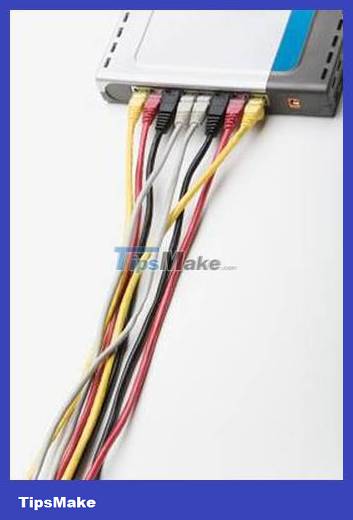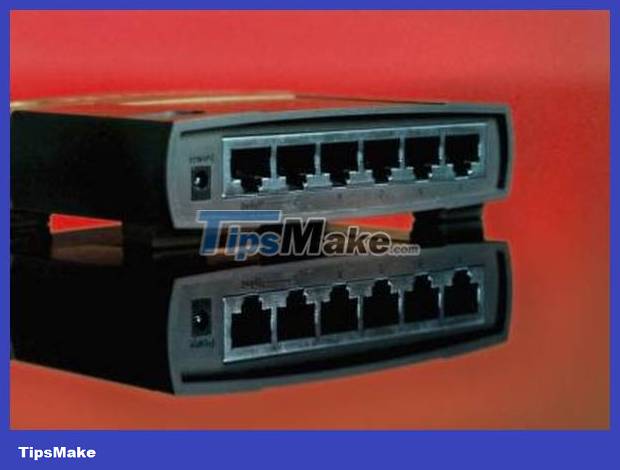Disadvantages of using Hub
Network hubs are at a disadvantage against switches in every technical area. Switches and hubs perform the same general function of connecting computers, as well as computer-like devices, to a network, but switches do everything better.
The only advantage of a hub is that it costs less than a comparable switch, but networking equipment is becoming increasingly affordable, making this price difference negligible. Hubs support networking, but they do not prioritize or sort traffic. The switch acts as a smarter version of the hub and improves the network experience.
The Hub can only communicate in half-duplex mode
Network hubs can only communicate in half-duplex mode. They can only send or receive data at any one time. A hub in the network constantly switches between sending and receiving data, which creates an inefficient data flow process. Network switches can communicate in full-duplex mode, sending and receiving data from every connected device at the same time, without having to switch modes.
No dedicated bandwidth

Network hubs share all of their bandwidth between every connected device. In a hypothetical situation, a 100-base hub has 100Mbps of bandwidth for four different computers sharing the connection. If one computer is sending a large file to another computer, it will take up all the bandwidth and cause the other two computers to access the network slowly.
Network hubs are at a major disadvantage against switches in providing dedicated bandwidth to each device. For example, if 2 of 8 computers connected to the same network switch are sending large files back and forth, the remaining 6 computers will still have full bandwidth.
Hub cannot distinguish devices

Hubs are at a disadvantage compared to switches, because hubs cannot distinguish between devices on the network. If one computer is trying to connect to another computer in a hub-based network, the hub sends messages to every other computer on the network, consuming bandwidth for each transmission. If one computer is trying to connect to another computer in a switch-based network, the switch recognizes which computer the information needs to go to and sends it only to that computer, which significantly reduces traffic. data.
Network size

Hubs cannot support large networks like switches, because hubs send all traffic to every device on the network. The more devices you add, the slower the network becomes, eventually becoming unusable. In contrast, switches transfer network traffic directly so they can be used with networks with dozens of devices without problems. The Hub may start to have performance issues when more than 8 devices share the connection. Network hubs are often far behind switches when it comes to handling this problem.
You should read it
- 5 disadvantages when switching to Raspberry Pi 5
- Advantages and disadvantages of hard drive partitioning
- Advantages and disadvantages of Wifi and wired networks
- Advantages and disadvantages of Li-Ion, Li-Po, Cell battery
- Table fans and box fans, which is the smart choice?
- Learn the advantages and disadvantages of the versatile printer series
- Compare Microsoft Surface 3 and Surface Pro 3
- Domain Controller virtualization solutions - Part 1
May be interested
- Advantages and disadvantages of Li-Ion, Li-Po, Cell battery
 li-po, li-ion, and cell batteries are the most popular battery technology lines today. they are used in most computers, smartphones or power banks available on the market.
li-po, li-ion, and cell batteries are the most popular battery technology lines today. they are used in most computers, smartphones or power banks available on the market. - Table fans and box fans, which is the smart choice?
 electric fans are indispensable household appliances, especially on hot sunny days. in particular, box fans and table fans are cooling devices are quite a lot of users interested. however, the selection of box fans and table fans also makes many people feel puzzled by the similarities of utility and price.
electric fans are indispensable household appliances, especially on hot sunny days. in particular, box fans and table fans are cooling devices are quite a lot of users interested. however, the selection of box fans and table fans also makes many people feel puzzled by the similarities of utility and price. - Learn the advantages and disadvantages of the versatile printer series
 what is a multifunction printer? how does it have advantages and disadvantages? let's take a look at the following article of quantrimang.
what is a multifunction printer? how does it have advantages and disadvantages? let's take a look at the following article of quantrimang. - Advantages and disadvantages of wireless charging
 the modern version of wireless charging technology we know today first appeared in phones in 2012.
the modern version of wireless charging technology we know today first appeared in phones in 2012. - Compare Microsoft Surface 3 and Surface Pro 3
 surface 3 and surface pro 3 at first glance are exactly the same but are actually different devices. the article has tested surface 3 and surface pro 3 to help you decide which option is more suitable for you.
surface 3 and surface pro 3 at first glance are exactly the same but are actually different devices. the article has tested surface 3 and surface pro 3 to help you decide which option is more suitable for you. - Domain Controller virtualization solutions - Part 1
 in this article we will show you the advantages and disadvantages of some common domain controller settings.
in this article we will show you the advantages and disadvantages of some common domain controller settings. - What is cryptocurrency? Is it legal? Advantages and disadvantages like?
 this article will introduce cryptocurrency (cryptocurrency), advantages, disadvantages and legality in our country. click to see it!
this article will introduce cryptocurrency (cryptocurrency), advantages, disadvantages and legality in our country. click to see it! - Compare DDR3 and DDR4
 ddr3 is one of the most common types of computer memory for a long time. however, it was gradually replaced by ddr4. below is the difference between ddr3 and ddr4 and some information on why those differences are important.
ddr3 is one of the most common types of computer memory for a long time. however, it was gradually replaced by ddr4. below is the difference between ddr3 and ddr4 and some information on why those differences are important. - Compare Zoom and Skype: 2 video chat applications for working from home
 for remote workgroups, zoom and skype are two of the most recommended communication tools. you can use both platforms to hold video calls, chat and open web meetings or conferences.
for remote workgroups, zoom and skype are two of the most recommended communication tools. you can use both platforms to hold video calls, chat and open web meetings or conferences. - Active and passive noise headphones, which type?
 while you enjoy the music, in addition to the quality of the diaphragm, one of the factors that affect the sound quality the most is the noise outside that reaches your ears.
while you enjoy the music, in addition to the quality of the diaphragm, one of the factors that affect the sound quality the most is the noise outside that reaches your ears.










 How to block Internet access for a specific user account
How to block Internet access for a specific user account How to block Internet access using Group Policy (GPO)
How to block Internet access using Group Policy (GPO) Difference between Segment and Backbone in network
Difference between Segment and Backbone in network Learn about Border Gateway Protocol (BGP)
Learn about Border Gateway Protocol (BGP) How to assign a static IP address in Windows 11, 10, 8, 7, XP or Vista
How to assign a static IP address in Windows 11, 10, 8, 7, XP or Vista How to Detect Remotely Accessed Computers
How to Detect Remotely Accessed Computers